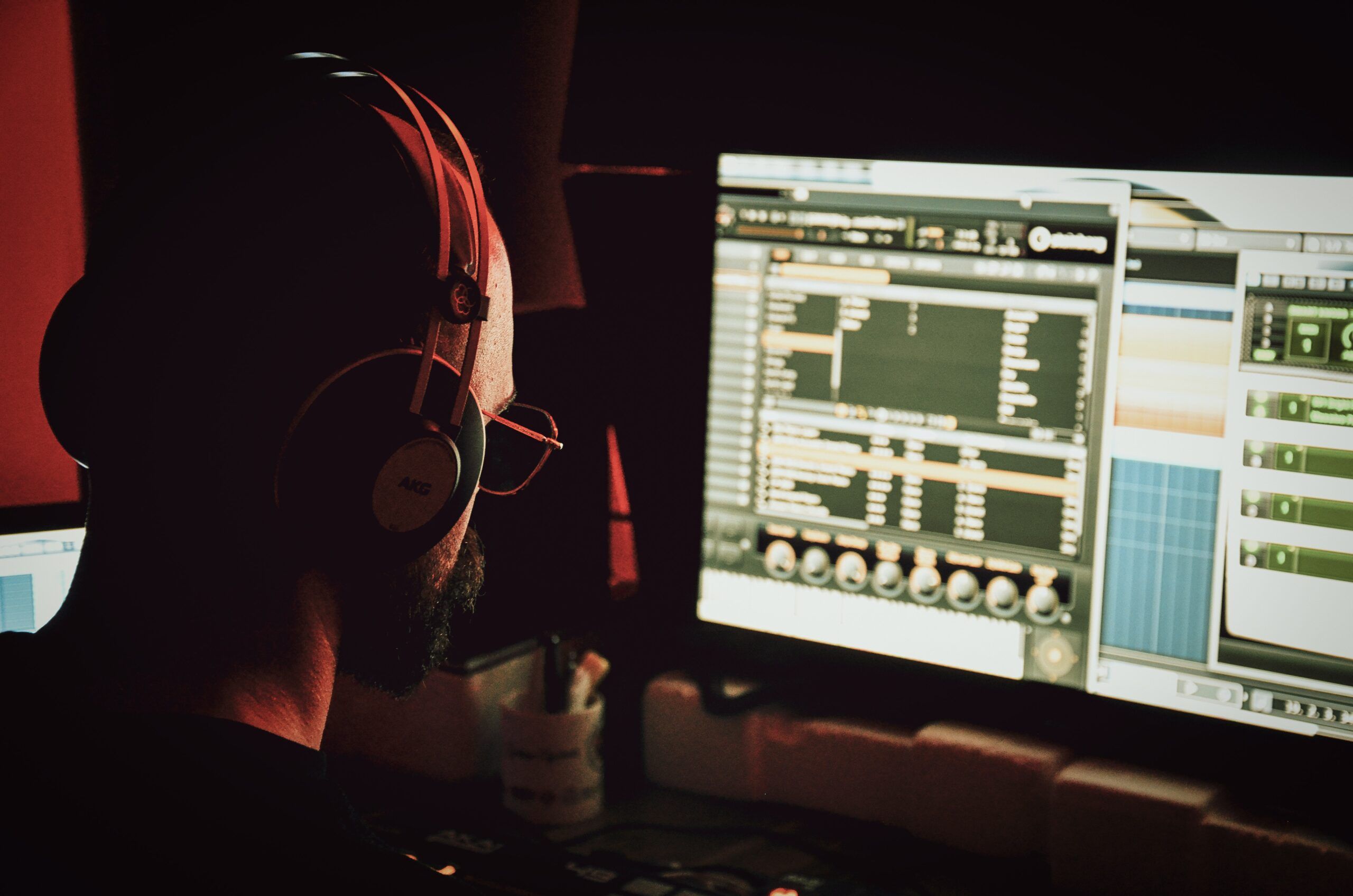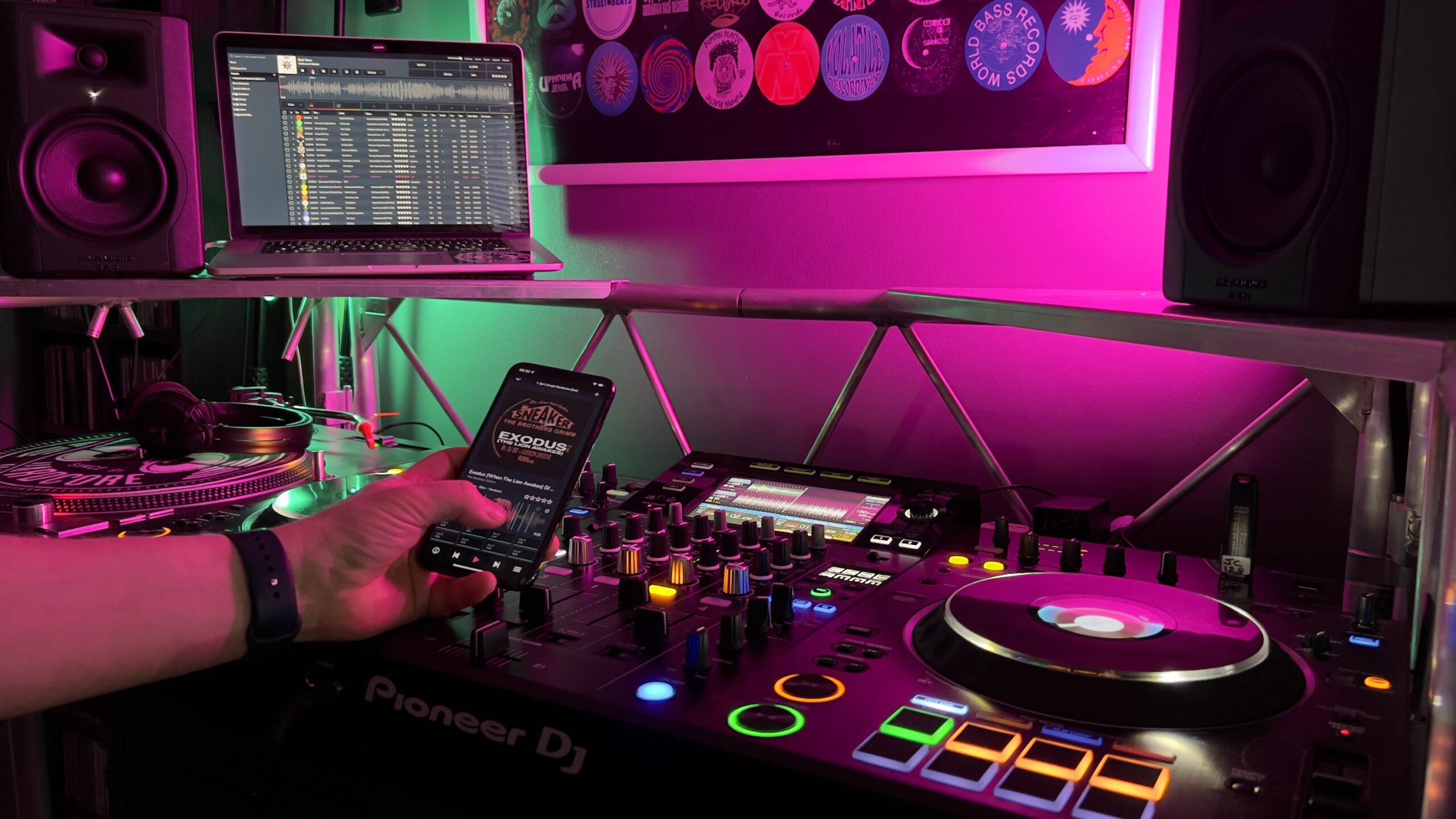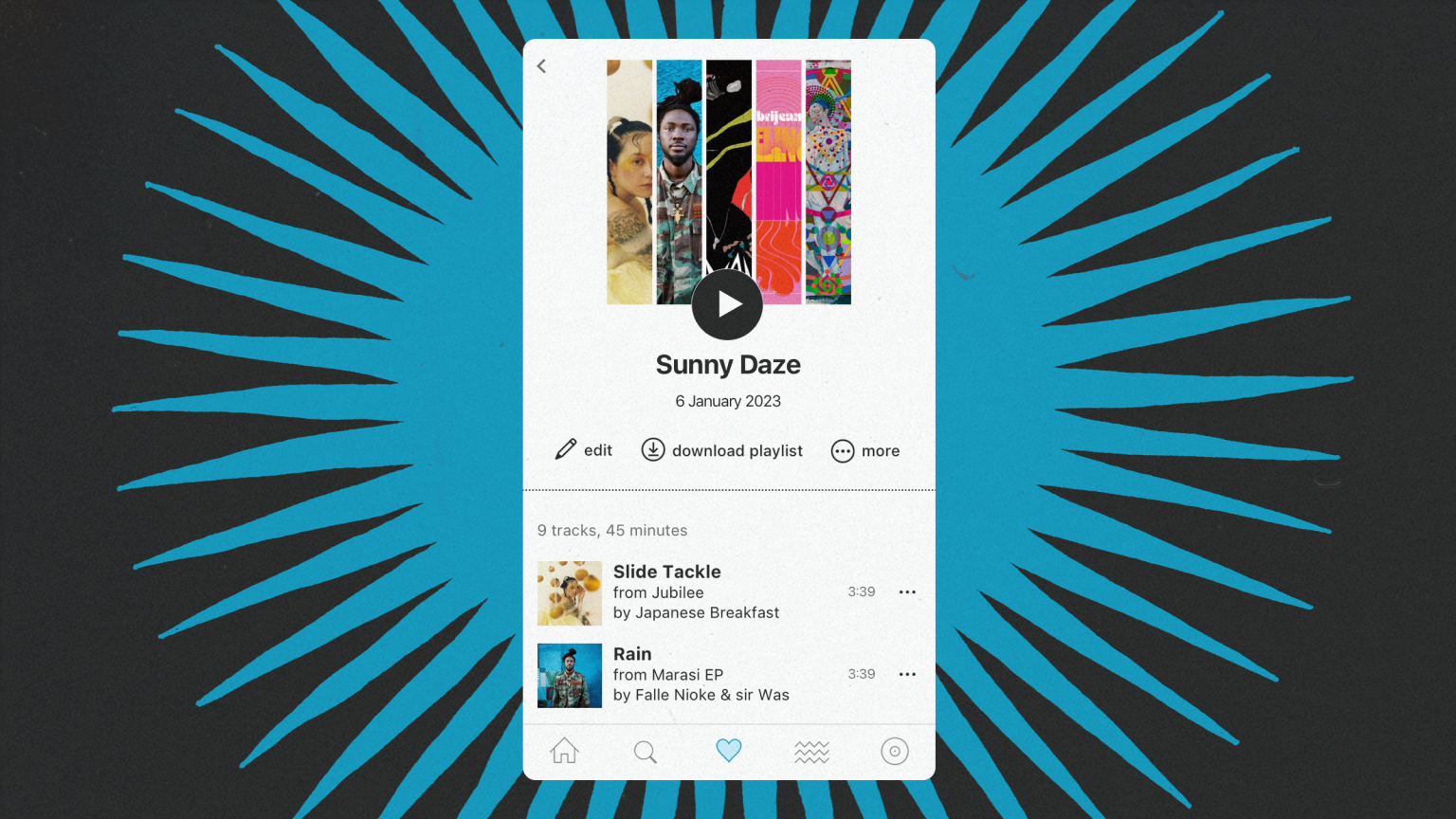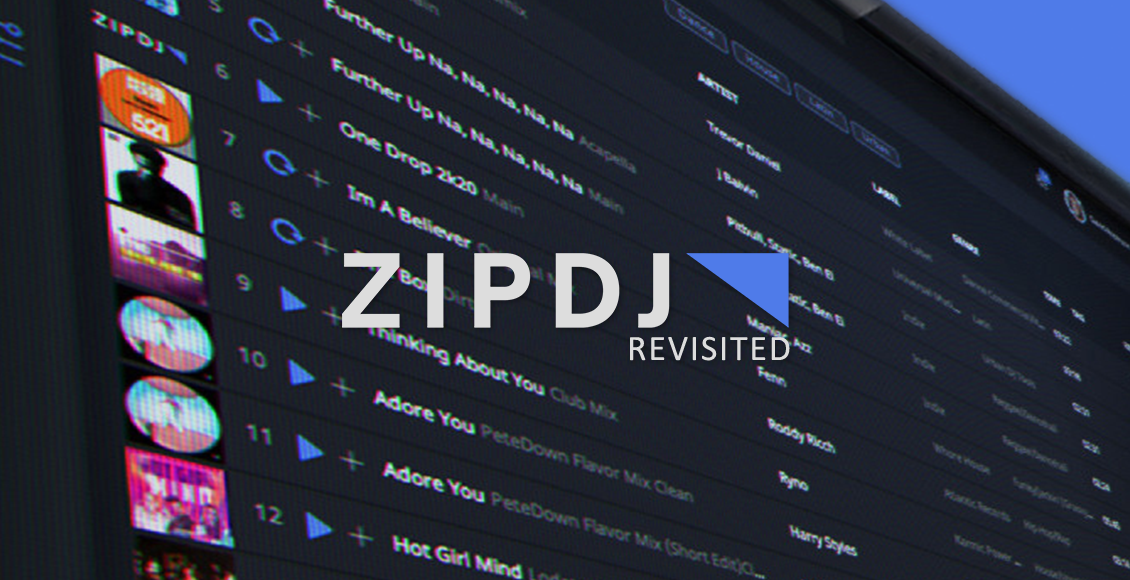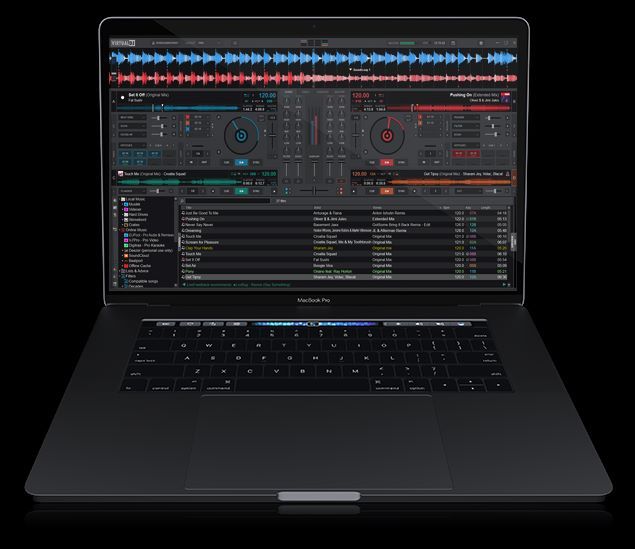Whether you’re a seasoned DJ of many years or just getting into the craft, you’ve probably struggled with organizing playlists at some point in your career (I know I have). As someone who’s been DJing for over 10 years, I’ve tried countless methods of arranging my music library. Many folks will say that organizing by genre is the best way. Others will recommend making a separate playlist for each gig. While each of these approaches do work, there is another way that incorporates these two ideas – and takes them a step further.
This guide is designed to help DJs of any genre and experience level improve the way they organize and use their playlists. By implementing the ideas presented here, you will have a better understanding of how to get people dancing, how to keep them interested, and even how to freestyle a set on the fly.
So, what’s the trick? How do we as DJs learn to make our playlists work for our own flow? How do we learn to control the dancefloor without spending our booth time endlessly scrolling through hundreds (or thousands) of tracks? There may be no specific right answer here, but today we’ll discuss my special recipe: organizing your music by energy.
What is Dancefloor Energy?
The most important place to start is with the reason so many of us become DJs: the dancefloor. To have an understanding of the dancefloor, we need to know how to control the movement of energy. Depending on your set time, the venue, the event’s theme and the other artists involved, the dancefloor energy may be different in any given scenario.
As DJs, when it comes down to it: we are responsible for the flow of dancefloor energy. We have the power to bring the energy up, drop it down, or keep it steady – depending on what is needed at that time and place. The way we do this is through appropriate song selection, fluid mixing of tracks, and watching – then responding – to our audience.
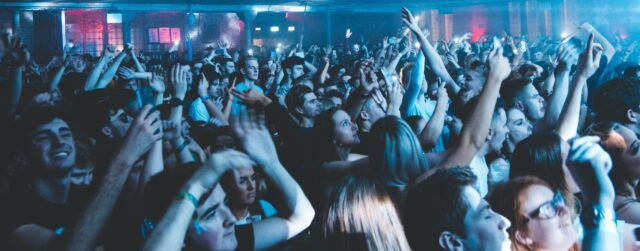
Many (if not all) of us have experienced that moment when we played a track and instantly lost the crowd’s attention or even cleared the dancefloor. Let’s be honest: it’s happened to the best of us, regardless of fanbase, experience level, or excitement.
While this may be one of the worst feelings, it’s not always something to take personally either. There are a variety of reasons this could happen. Maybe it’s because you’ve chosen a song that doesn’t match the vibe of the dancefloor, you may have mixed two songs that clashed in some way (i.e. out of key, vocal overlap, inconsistent phrasing, or improper beatmatching), or you weren’t paying attention to the crowd. It’s not an easy task, and it’s an artform that comes with time and practice – but at the end of the day, an artist’s ability to read the room and react as such is crucial as you grow in your career.
So, that leaves us to ask the question: how does the DJ manage all of this while still maintaining their authenticity in both style and artistry?
Understanding Your DJ Style
Writing a guide to organizing music can be hard when I have no idea what kind of DJs will be reading it. I’ve done my best to make this as inclusive as possible – but it does require some work on your end. A crucial aspect of playlist curation is understanding your own style as a musician.
When I say style, there are a few different things that fall under this umbrella: genre, mixing, and energy. With each of these, ask yourself:
- Genre
- Are you an eclectic DJ who likes to traverse multiple genres in a set?
- Do you stick to one genre all the time?
- Do you play different genres depending on the event?
- Mixing
- Do you like to layer tracks that you’re mixing, essentially creating a new song in the process?
- Do you like to chop-and-cut, playing tracks in a rapid-fire approach?
- Do you like to double-drop, building two songs together then playing with the fader to create a live mashup?
- Do you like to allow each track to stand alone, mixing outro to intro each time?
- Energy
- Are you a DJ that provides high-energy sets and prefers the club/festival/rave setting?
- Are you a DJ that likes to play vibey, groovy, and soulful music for more intimate venues?
- Are you a DJ who loves it all and wants to play all the gigs?
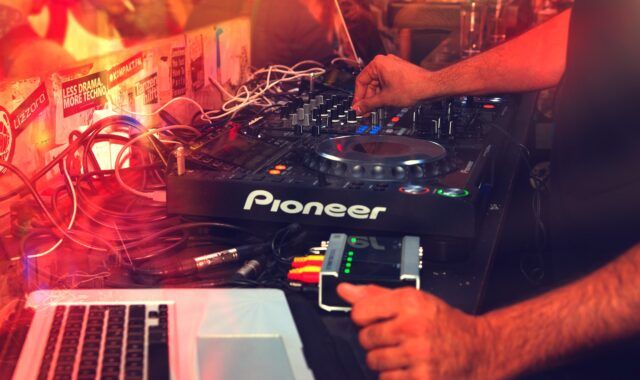
Once you have a clear understanding of how you like to select tracks, mix, and build energy, it becomes easier to decide how to best organize your library in a way that lets you highlight your artistic expression. The whole idea of organizing playlists in advance is to allow a seamless and comfortable flow during a performance, while also giving you room to freestyle with track selection throughout your sets.
Keep in mind, of course, that your responses to these questions may (and oftentimes probably should) change depending on the setting – and they will likely shift as you hone your skills. You don’t need to pigeon-hole yourself as a specific category of DJ, as being eclectic and able to adapt to any setting is a crucial part of growth in an artist’s career.
Imagining Your Ideal Set
If you could play any set, anywhere, for any duration of time, what would it be? Get creative here, because this answer will become the next step towards building those playlists that reflect your style and DJing preferences.
Here’s what to consider while you’re imagining that set:
- What genres are you playing? How are you weaving them together?
- What BPM range are you playing? Are you keeping it steady throughout, going on a roller-coaster ride, or providing a steady build-up and release?
- What moods are you expressing? Are you playing heavy music, happy music, or the whole spectrum of human emotion?
- How are you mixing your songs? Are you mixing fast and choppy, smooth and fluid, or slow and methodical?
- Who is your target audience? What kind of people are on the dancefloor? Are they heady, old-school dance music freaks? Are they new-to-the-scene boppers? Are they fans of popular or hipster music? Are they into weird experimental stuff?
- How long are you playing for? Are you there for the bang-it-out sprint set or the story-telling marathon set?
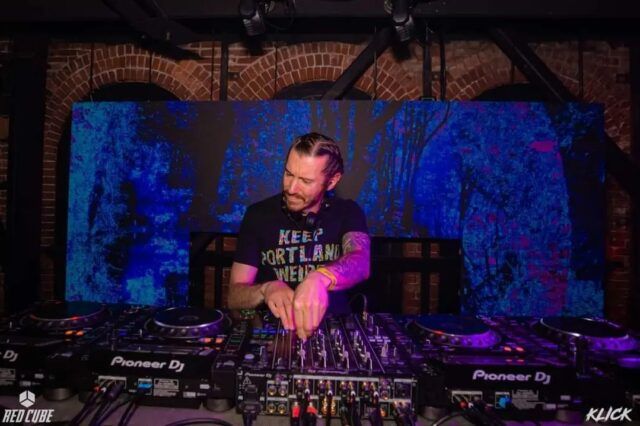
Imagining your ideal set provides you with a framework for your DJ performances. By having an ideal set prepared, you can use it as a model for all the other playlists you create. Your answers to these questions will give you deeper insight into who you are as an artist and how to best utilize the tools available to you. This is also a great way to hone your DJ skills – by practicing this set, recording it, and listening back – you will be able to find where you’ve made mistakes, where you would change the order of songs, or where the energy flow can be adjusted.
The Tedious Part: Analyzing Tracks
Now that you’ve determined your DJ style and your ideal set, you are ready to start analyzing and organizing your tracks. Every DJ has their own method that works best for their creative flow, and ultimately you’ll find how you want to arrange your tracks. As a starting point, I have provided my personal approach to curating playlists based on dancefloor energy levels.
After playing just about every kind of venue and event out there – clubs, festivals, raves, art-walks, fashion shows, house parties, weddings, company parties, and even parades – I’ve determined there are roughly 7 energy levels that DJs encounter on their dancefloor. These are based on time of day and the crowd’s willingness to dance.
Keep in mind that these are subjective, and I’ve put them together based on my own experience. As you read through these, you’ll get a general idea and see where they fit into your own DJ scenarios.
My energy levels are:
- Sunrise – ambient, pretty, groovy, soulful music.
- Kickin It – chill-out, head-bobbing, sit-down, eyes-closed listening music.
- Warm-Up – as the name suggests, these are tunes to warm up the dancefloor. Think light-hearted, eclectic, familiar, easy-listening, hip-sway music.
- Primetime – these are your ‘headliner’ tracks – what you would play at the peak of the evening to keep the dancefloor moving at a high energy.
- Bangin’ – these are your headbang tracks, your absolute face-melters reserved for those moments when there is so much energy in the room that the roof might blow off.
- Trippin’ – these are your tracks that you would play when you are ready to show your weird, experimental, and trippy side as an artist. Generally you would save these for a late-night crowd of true electronic music fans.
- Late Night – this is your vibey playlist. These are tracks to close out the night. Anything that gives you the feels and keeps you moving is appropriate.
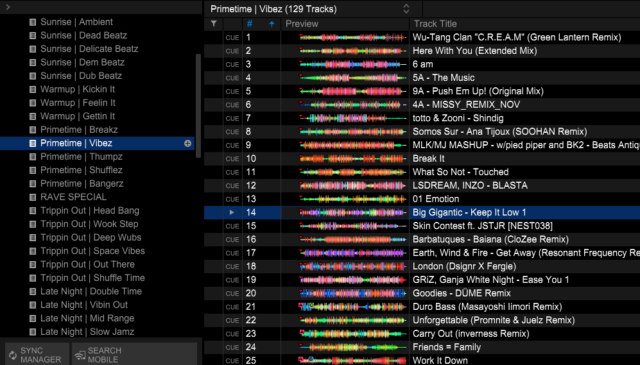
While this list is extensive – yes, you may find that some of these categories are irrelevant, or that you need more than what is provided here – it’s intended to offer a starting point to help you find what works best for you. Within each of these categories, I have sub-categories that allow me to find the right song for the moment with minimal effort. Generally, my sub-playlists are broken-down by genre, beat-structure, swing, or otherwise (see screenshot above).
Whether you are using Rekordbox, Serato, Traktor, or otherwise, there will be a built-in function that allows you to analyze your tracks and provides you with the track’s key and BPM. Once you’ve analyzed your playlists, I suggest arranging by BPM first, followed by key, energy level, vocals, and genre (see screenshot below).
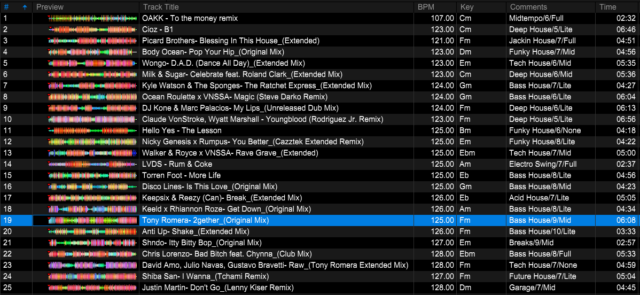
Need help navigating this process? Check out this video, which explains how you can manually arrange tracks in a Rekordbox playlist. Use your own preferences for the order of tracks when you are organizing to ensure ease of use.
A very useful tip is to listen to each song in your library as if you were a person on the dancefloor. Think about – does this song bring my energy up, does it slow me down, or does it keep a steady beat throughout? While some DJ software (like Mixed in Key) will give each song a perceived energy level, that rarely will tell you how the song will perform when it is being played for a dancefloor. It’s up to you to decide how it will fit into your sets. If you ever struggle to build a playlist that feels cohesive or fluid, you can try using Smart Playlists in either iTunes or Traktor.
Note – don’t be afraid to place your favorite tunes in multiple playlists instead of just one (I do this quite often).
How to Use Your New Playlists
Once you have listened to your entire catalog of music, placed each song into its designated playlist (or playlists), and exported these playlists to your USB drive – you should start getting familiar with them! The best way to do this is by practicing.
Some ideas to implement when you are practicing with your new playlists:
- Create different scenarios for yourself – imagine playing for an empty club, a huge rave, an intimate house party, and any other setting that you may or may not find yourself in. Doing this will help you in selecting songs and mixing in different ways that push you outside your comfort zone.
- Pick one of your playlists and randomly select songs to mix together. Do they sound cohesive or are they wildly different? This will help you in determining whether or not your organizing is going to work for you.
- Find your ‘hot pockets’ – these are usually 2-3 songs that you know will go together no matter what. I will go to my hot-pockets when I don’t know what else to pick and need to figure out where to take my set.
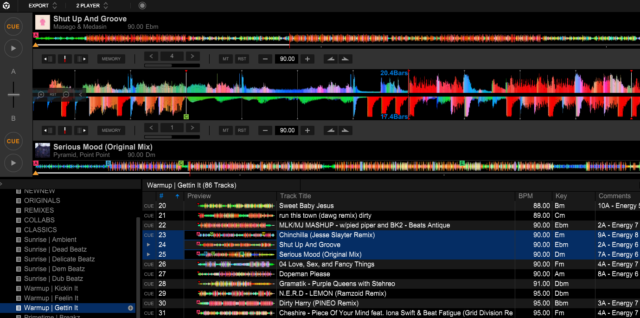
- Find your deep cuts – these are songs that make your heart sing and are best saved for the end of a set.
- Find your set openers – these are songs that introduce you and your style. You should have at least one set opener in each playlist.
- Know your music! This is the #1 piece of advice I have for any DJ, and it is especially important within this context: if you want to be able to freestyle, and you want to craft fluid and fun sets – knowing your music will help you get there.
The Last Word: Fine-Tuning
To ensure that your playlists are working for you, I recommend taking notes after each practice session. What worked really well? What didn’t work at all? What needs minor adjusting? Do you need to create a new playlist, delete one, or just reorganize a bit? If you’ve taken the time to understand your DJ style and what your ideal set would be, your playlists will be a useful tool for expressing your artistic vision.
Be as intuitive as you can when fine-tuning your playlists – you don’t need to overthink the process. Again, put yourself into the shoes of someone on the dancefloor so you can connect to the way your body wants to move when you hear the music. Be OK with change – your playlists will evolve over time, so don’t try to create something that is rigid and finite.
Let’s hear it – what do you think? Is this system helpful for your flow? How else do you organize your playlists? Any advice you’d offer? Share it in the comments below.


